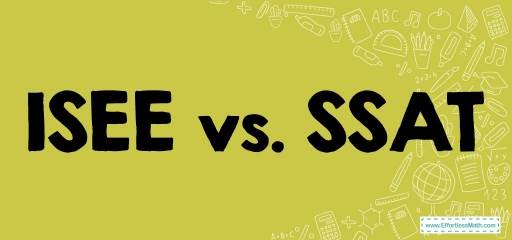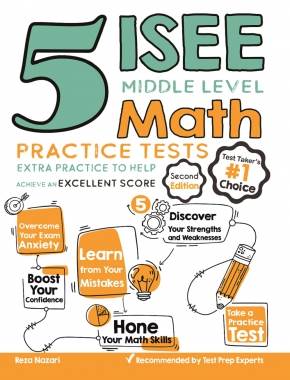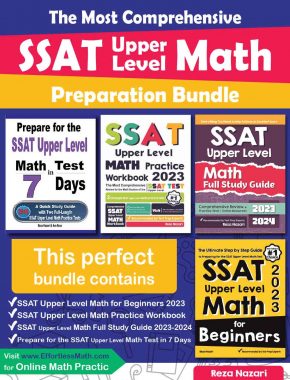ISEE vs. SSAT

Students are sometimes confused about the ISEE and SSAT exams, and indecisive about which aptitude tests they should take. Both exams are used for application into independent secondary schools in the US. They test students reading, writing, and mathematical skills.
Both exams are pretty similar but with distinct differences that every student should note. Keep reading to know these differences that’ll help you choose which exam to go for between the two.
The Absolute Best Book to Ace the SSAT Math Test
Which test to write between the ISEE and SSAT
The choice between the two depends on you and the school’s requirements you’re processing your admission.
If the school you’re planning on attending uses both exams, you can either choose one of both or decide on both and compare your results. But, if the school whose admission you’re processing only uses one of these exams, you should write the exam the school requires.
Testing levels
Each exam has its unique way of segregating students into different levels based on their ages or grade levels.
The ISEE categories include Primary (students applying to grades 2-4), Lower Level (students applying to grades 5 and 6), Middle Level (students applying to grades 7 and 8), and Upper Level (students applying to high school).
The SSAT, on the other hand, consists of categories Elementary Level (students applying to grades 4 and 5), Middle Level (students applying to grades 6-8), and Upper Level (students applying to high school).
The Absolute Best Book to Ace the ISEE Math Test
Test Format
The ISEE includes 4 scored sections: verbal reasoning, quantitative reasoning, mathematics, and reading comprehension. At the same time, an unscored writing sample written by the student is sent to their prospective school. At the same time, the SSAT consists of verbal reasoning, quantitative reasoning, reading, mathematics, and unscored writing samples sent to the school, which is part of the student’s application.
Marking scheme
For the multiple-choice questions, the ISEE has no penalty for questions answered wrongly. The SSAT, on the other hand, gives a negative marking of ¼ to students who guess answers incorrectly. Which can prevent students from answering questions they are not so sure of.
Also, the scoring systems are quite different from each other. The SSAT scores are converted to a percentile while the ISEE scores remain the same.
Logistics
Both exams can be administered either as computer-based tests or paper-based tests. Students writing the computer-based test can either write the exam at home or at a testing center. While students writing the paper-based test can do so at school or a testing center.
A student can take the ISEE test a maximum of three times, while for that the SSAT, a student can sit for this exam no more than 8 times and no more than 5 times if the student is writing from home.
The exam seasons include fall (August-November), winter (December-March), and spring/summer (April-July).
For students, applying to private and independent secondary schools is usually quite difficult. To make things easier, you should start your application process early to avoid the late-hour rush.
Also, if you’re unsure about which exam is part of the school’s requirement, you can ask the admission officer so that you can make your decision early.
The Best Books to Ace the ISEE and SSAT Math Test
ISEE Upper Level Math Study Guide Step-By-Step Guide to Preparing for the ISEE Upper Level Math Test
Related to This Article
More math articles
- 6th Grade Math Worksheets: FREE & Printable
- FREE 6th Grade NYSE Math Practice Test
- The Ultimate GACE Elementary Education Math Course
- How to Calculate Limits of Functions
- Missing Numerals
- How to Find Constant of Proportionality?
- How to Use Input/output Tables to Add and Subtract Integers?
- In-Depth Analysis of Vector Function Derivatives: Theory and Practical Applications
- Other Topics Puzzle – Challenge 100
- How to Understanding Onto (Surjective) Functions






























What people say about "ISEE vs. SSAT - Effortless Math: We Help Students Learn to LOVE Mathematics"?
No one replied yet.